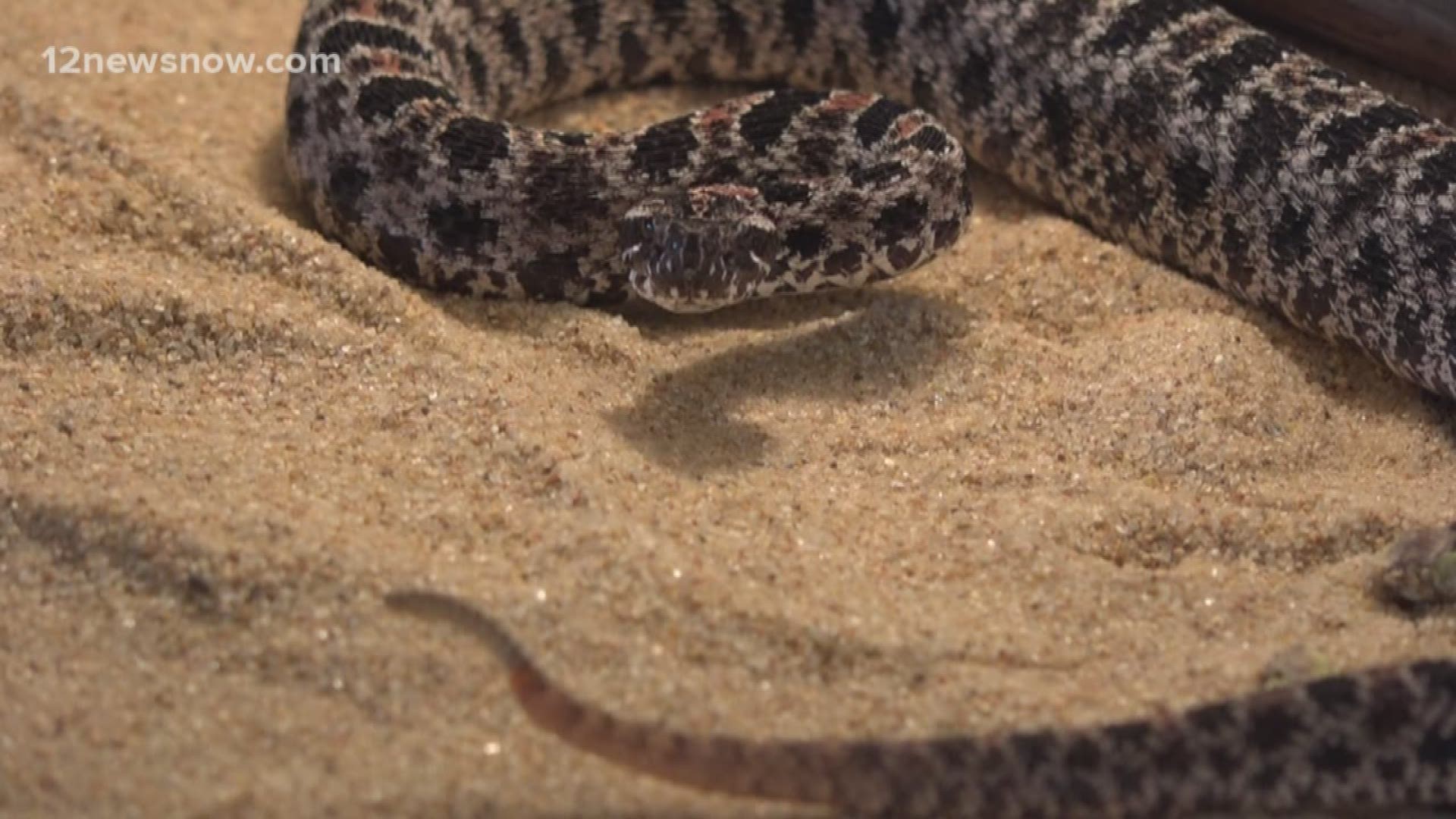GROVES, Texas — The recent warm weather has snakes coming out for some sun in Southeast Texas. Stephanie Lee had an encounter with some last week in Groves when she was moving her kids picnic table in her yard.
"They were real, real slow and so I didn't freak out or anything," Lee said.
She called over her son and his fellow cub scouts to take a look. Curious, Lee reached out to her group of cub scout parents and posted on Facebook to see if anyone knew what they were.
Cub Scout parent Brandon Frakes identified them as Rough Earth Snakes. He said they're totally harmless, and even beneficial.
"All snakes are here for a good reason, they're all manageable, they all do their part to do their jobs," Frakes said.
Frakes grew up around reptiles, and makes sure his son is fully informed on what's safe to interact with, and what to leave alone.
Gator Country's Gary Saurage said this is the time of year snakes start to come out.
During the winter time, snakes go into what's called a brumation. It's a hibernation-like state they go into to escape the cold. They live under logs, old pieces of carpets, things where they can get out of the wind and colder weather.
Once the weather starts getting into the 70s and the snakes warm up, they'll start looking for food.
"Then as they start finding food they'll start to shed, when they start to shed they'll be blind a little bit, and a little bit more aggressive," said Saurage.
This time of year, the snakes are more likely to strike, according to Saurage. However, the majority of snakes in southeast Texas are safe.
Saurage said there are five venomous snakes in Southeast Texas to look out for.
The first is the copperhead. Saurage said they're responsible for the most bites in our country. He said it's a mild venom that won't kill you, but you will need to seek medical attention. The copperhead likes a dryer climate, they can be found up in the pine straws and needles.
Second is the water moccasin, also known as the cottonmouth. Saurage said that venom is a bit of a higher level than the copperhead. It's the most prevalent snake in southeast Texas. Saurage said one of those bites will put you in the hospital for about a week. They hangout anywhere it's damp, and love to be around the water.
Third is the pygmy rattlesnake. Saurage said it's about a two and a half foot long snake, but not to let that fool you. It's highly venomous. Fourth, also in the rattlesnake family, is the timber rattlesnake. He said in his opinion, it's the most venomous we have here because it's a dual-venom. That snakebite is very tough to treat. The rattle snakes also enjoy a dryer climate.
Lastly is the coral snake, most commonly known by it's red and yellow stripes. That snake, according to Saurage, is a 100% neurotoxin. The bite is highly dangerous, and they enjoy a sub-tropical climate. They hangout places where it's moist and wet.
"Remember that we do have tons more snakes that are not venomous, and really and truly there's no harm to you other than giving you a heart attack," said Saurage.
If a non-venomous snake bites you, you won't need any medical attention. Saurage said it will likely bleed a little bit and in some cases itch.
"If you know the venomous snakes you're safe, just know which ones they are," said Saurage.
While most snakes here are safe, Saurage said to assume all snakes are dangerous at first.
"I want everyone to treat every snake like it is venomous at first, okay, make sure you can identify it, if you are not 100% on what species that snake is, leave it alone," said Saurage.
Saurage said all snakes, even the venomous ones, have a job to do. If you have a king or rat snake, he suggests allowing it to do their job and go on their own.
Saurage said he understands not wanting to live around venomous snakes.
"I get that, so you do what you got to do in that area."
He said if you want to get rid of it, to call them and they'll move it for them, but don't try moving it on your own.
Right now, the snakes are going to be looking for warmth. They'll start popping up on asphalt roads, near dryer vents that blow outside, inside an engine block, and any place they can warm up. Once they've warmed up, their concentration will shift to their food.
Saurage said educating yourself on what's out there is the best way to protect yourself.
Stephanie Lee is glad she did.
"My kids and other children, they're going to interact with the outdoors and it's better to know which plants and animals and insects are good and which ones are bad," said Lee.

